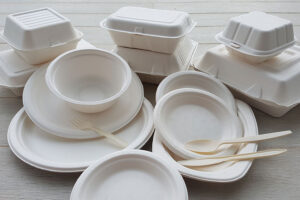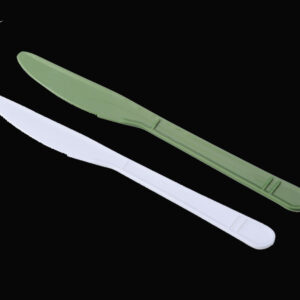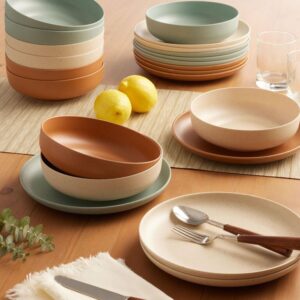

Are you passionate about sustainable living and want to contribute to a greener planet? Are you a distributor or a customer looking for customizable eco-friendly tableware options? Look no further! In this comprehensive guide, we will explore the world of sustainable organic food packaging and provide you with all the information you need to make environmentally conscious choices. So, let’s dive in and discover you can be eco-friendly and trendy at the same time!
The Importance of Sustainable Organic Food Packaging
Sustainable organic food packaging plays a crucial role in reducing our environmental impact and promoting a more sustainable future. Conventional packaging materials, such as plastic and Styrofoam, are notorious for their detrimental effects on the environment. They contribute to pollution, take centuries to decompose, and are often non-recyclable or difficult to recycle.
By opting for sustainable organic food packaging, we can significantly reduce our carbon footprint, minimize waste, and protect our ecosystems. These eco-friendly alternatives are made from renewable resources and are biodegradable, compostable, or recyclable. They are designed to minimize environmental harm throughout their lifecycle.
Exploring Sustainable Packaging Alternatives
1. Biodegradable Packaging
Biodegradable packaging materials are designed to break down naturally over time, ultimately returning to the earth without causing harm. These materials include plant-based plastics, compostable paper, and biodegradable sugarcane bagasse.
One of the most popular biodegradable packaging options is PLA (polylactic acid) made from cornstarch. PLA looks and behaves like traditional plastic but is fully compostable. It can be used for packaging a wide range of food products, from fresh produce to takeaway containers.
2. Compostable Packaging
Compostable packaging goes a step further than biodegradable packaging. It not only breaks down but also turns into nutrient-rich compost, enriching the soil. Compostable materials are often made from renewable resources like plant fibers or bagasse, a byproduct of sugarcane production.
Switching to compostable packaging for your organic food products ensures that even the packaging waste can contribute to a more sustainable ecosystem. Compostable packaging materials can be used for various purposes, including food containers, cutlery, and even coffee cups.
3. Recyclable Packaging
Recyclable packaging is another essential aspect of sustainable organic food packaging. These materials can be processed and reused to create new products, reducing the need for raw materials and energy-intensive manufacturing processes. Common examples of recyclable packaging include paper, cardboard, and certain types of plastic.
However, it’s essential to note that not all materials labeled as recyclable are easy to recycle. To maximize the recyclability of your packaging, choose materials that are widely accepted by recycling facilities in your area. Additionally, look for packaging made from recycled materials to close the loop and promote a circular economy.
4. Reusable Packaging
A growing trend in sustainable organic food packaging is the use of reusable containers or packaging systems. By encouraging customers to return packaging for reuse, we can significantly reduce waste and minimize the need for single-use materials. Reusable packaging options range from glass jars and bottles to stainless steel containers and fabric bags.
Some companies have even implemented innovative systems that allow customers to refill their packaging in-store, eliminating the need for disposable packaging altogether. This approach not only benefits the environment but also fosters customer loyalty and engagement.
How to Choose the Right Sustainable Organic Food Packaging
With so many options available, it can be overwhelming to choose the right sustainable organic food packaging for your business or personal use. Here are some essential factors to consider when making your decision:
1. Material Sourcing and Production
Look for packaging materials that are sourced sustainably and produced using environmentally friendly practices. Opt for materials made from renewable resources, such as plant-based plastics, bamboo, or recycled paper.
Consider the energy and water consumption required during the production process. Packaging made using energy-efficient manufacturing methods and water-saving techniques is more environmentally friendly.
2. Certifications and Standards
To ensure the credibility and sustainability of your packaging, look for certifications and standards. Look out for labels like FSC (Forest Stewardship Council) for paper and cardboard products or the ASTM D6400 certification for compostable packaging.
Certifications ensure that the materials and manufacturing processes meet specific environmental and social criteria, giving you peace of mind that you are making a truly sustainable choice.
3. Functionality and Practicality
Good sustainable organic food packaging should not only be environmentally friendly but also practical and functional. Consider the specific requirements of your food products and choose packaging that meets those needs.
Ensure that the packaging is leak-proof, durable, and can maintain the freshness and quality of your products. Easy-to-use design and suitable sizing are also important factors to consider.
4. Branding and Aesthetics
Sustainable packaging doesn’t mean compromising on branding and aesthetics. Choose packaging that aligns with your brand identity and appeals to your target audience. Look for customizable options that allow you to add your logo, colors, or creative designs.
Remember, eye-catching and visually appealing packaging can enhance the overall customer experience while conveying your commitment to sustainability.
Conclusion: Embracing the Future of Sustainable Organic Food Packaging
Choosing sustainable organic food packaging is not just a passing fad; it’s a responsibility we all share. By opting for biodegradable, compostable, recyclable, or reusable packaging materials, we can contribute to a cleaner, greener planet.
As a distributor or customer, the power is in your hands. Consider the different aspects discussed in this guide when selecting your packaging options. Embrace the versatility and trendiness of sustainable organic food packaging while safeguarding our environment.
Remember, going eco-friendly doesn’t mean sacrificing style, quality, or practicality. It’s about making informed choices that have a positive impact on our planet and future generations. So, let’s make a difference, one package at a time.
Have you tried any sustainable organic food packaging options? What are your thoughts and experiences? Share them with us in the comments below!
Note: This guide is intended to provide general information and insights into sustainable organic food packaging. For specific product recommendations or guidance, consult with packaging experts or sustainability specialists.







